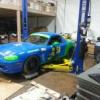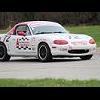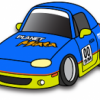First off I'd like to say I have learned a ton reading the information on these forums and everyone who I have communicated with on here has been great.
This is my second car that I have installed the Whiteline offset bushings on. Both times the install went fine and my questions really are based on how to know that the control arms are moving freely enough and then how frequently to check them.
I guess the premise of my question comes from the fact that I do not know if inertia in moving the upper control arms will play into the handling of the car...meaning is there going to be an optimum amount of move-ability to the control arms with these bushings for our purposes??...or is this just overthinking on my part??. Clearly the metal bushings are meant to rotate within the urethane and need to be greased on install to work properly and would be a problem if they were not. That being said, where the urethane contacts the subframe and the washers are friction points which needs to be overcome by the movement of the car. Can that movement be modified to be optimal by the level of torque to the bolt?..or greasing the contact points? Even if it can, is it irrelevant given how much force is going through the suspension?
It seems to me that the torque of the long bolt through the bushings would have some effect on how much the arm moves. Too much might cause the urethane part of the bushing to bind on the subframe and too loose might lead to the arm moving fore and aft.
Also in terms of monitoring the control arm movement and re greasing the bushings, I wonder if some have done this. If I recall correctly, the urethane bushings should not need to be re-greased...but I wonder if that is really the case. I figure some of these questions also probably factor in to how Delrin bushings might perform differently...
If anyone has an opinion on this, I'd be interested in what they think.
Cal
Tampa
(Ain't won squat, but I podium for fun every time)




 Sign In
Sign In Create Account
Create Account





 Back to top
Back to top Report
Report























